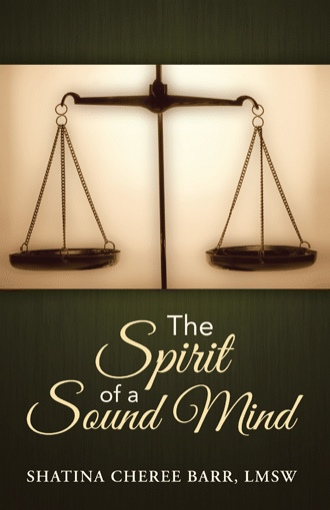Noted Orator and Author, Shatina C. Barr, speaks out about faith and suicide and other relevant issues in mental health and society as a whole. See direct quote from this book on such matters below:
“Jesus Christ Himself, when dealing with the knowledge of His impending crucifixion was so overcome with emotion that He could have died from the stress alone.
“…Jesus told his disciples, “sit here while I pray.” He took Peter, James, and John with him. He plunged into a sinkhole of dreadful agony. He told them, “I feel bad enough right now to die…” (Mark 14:32-34, MSG).”
For the professional or licensed practitioner, the suggested techniques in this book offer an additional lens for viewing clinical practice. For the lay person or user of behavioral health services, this book offers support for clients that prefer their faith be represented while in treatment.
From sky rocketing ratings in reality shows to an overabundance of reporting personal daily activities on social media sites, it is apparent that society is interested in being exposed to and critiquing human behavior. But, the desire to understand human behavior is not unique to this day and time. Greek philosophers such as Socrates and Plato as well as psychologists like Sigmund Freud and B.F. Skinner and many others in the social sciences have long attempted to define and address psychological functioning. At the same time, medical researchers and doctors such as neurologists and neuroscientist who represent the hard sciences want to help relate or improve human behavior by way of conducting experiments that aim to understand brain functioning in a physical capacity. The list of diverse academic disciplines involved in the study of human behavior could continue, but it is inarguable that we as humans are interested in understanding human life and activity. I too have questions about why people do what they do, but the aim of this book is not to pose a plethora of questions per se, but rather to suggest an additional lens for viewing mental or behavioral health through- the Bible.
Whenever I go to see the ophthalmologist for an eye exam, he provides several lens options to improve my vision. In an attempt to obtain the perfect fit, several lens combinations are provided. Behavioral or mental health is a complicated matter so using multiple lenses including both faith and science can be beneficial. For instance, a psychiatrist who prescribes medication to stabilize an individual’s biochemical processes is using one type of lens for understanding and treating mental health. A primary care physician who informs a patient that he or she should exercise more in order to increase energy levels to combat feelings of sadness can be considered to be using a holistic lens for responding to a behavioral health concern. My argument is that a therapist who uses faith-based interventions to address mental health by incorporating Scripture into therapy should also be considered to be using a valid lens in approaching interventions for treating psychological functioning.
Where Are the Gaps?
At present, there are significant gaps in terms of available material and discussion that is supportive of the interplay between faith, mental health theory and interventions. Frequently, when there is a gap between human understanding and postulation, there inevitably are flaws derived in the theoretical output and subsequent interventions developed. Specifically, such gaps can be found in the educational curriculum. That is to say, post-secondary education students in many colleges and universities are not exposed to the connection between mental health and the Bible. Pupils are not necessarily educated on the origins of mental health from a biblical perspective, or when faith is referenced in class, students are advised that the Bible is a mythical document that cannot be taken literally. From my perspective, clinical students who become mental health practitioners would gain a broader respect for the integration of theology and clinical theory, if and when such gaps are closed. Not surprisingly, the gap in the literature grows larger when seeking information regarding evidence- based interventions and faith in practice. Anti-faith influences on the social sciences hinder a successful collaboration between faith and clinical practice. Some of these hindrances are intricately woven into the fabric of clinical theory.
For the purpose of understanding the basis and argument of this book, it will be important to address three critical assumptions 1) The God of the Bible exists, 2) From a creationist perspective, God created all things including the human mind and 3) The words of the Bible have been given by God to humans in order to understand the world and ourselves and in many instances require a literal application, as opposed to a metaphorical one. Keeping these three points in mind as you read this book is critical in aiding your acceptance of my position, because if you the reader do not understand why I make such matter of fact conclusions in this book, there could be ambiguity on my claims.


